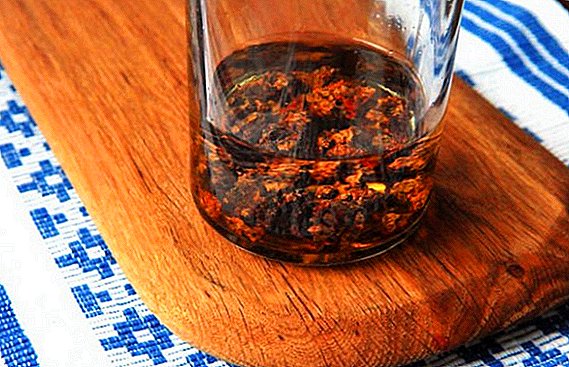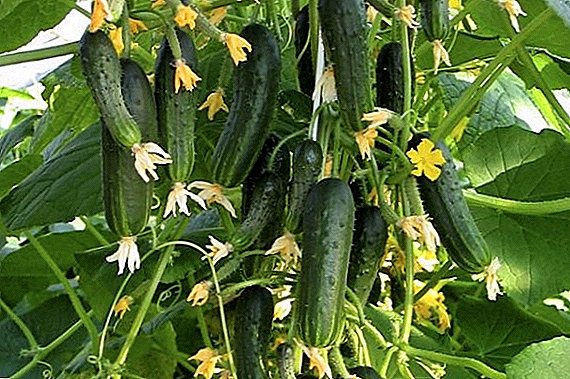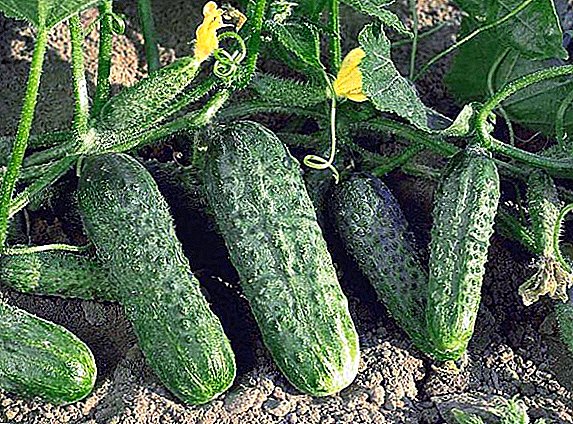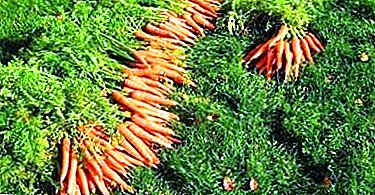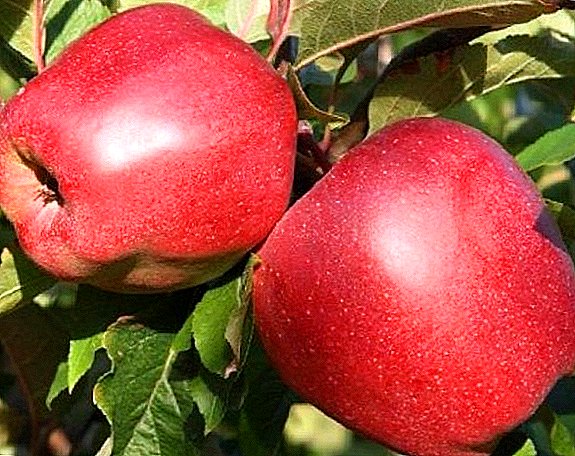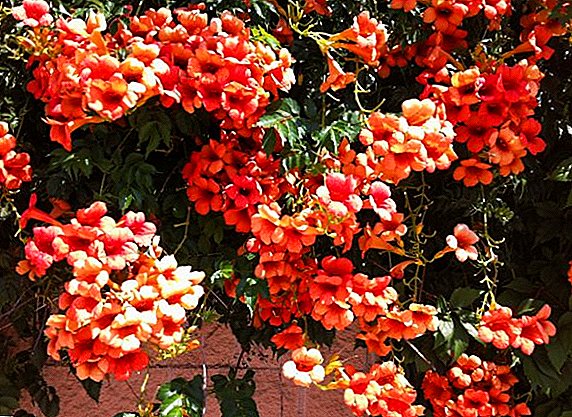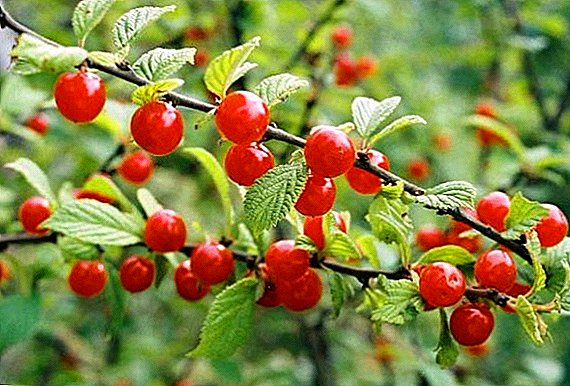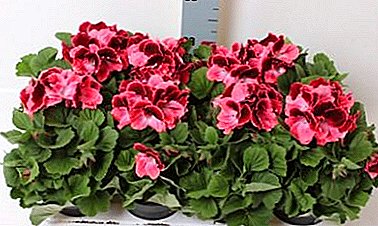
Grandiflora is a bright and beautiful representative of the species of pelargonium. In Russia, the flower has received great popularity.
The article will talk about how to properly care for the plant at home, about the features of Grandiflora, what to do if attacked by pests or diseases, how pelargonium reproduces.
Botanical description and history
Pelargonium Grandiflora is a small-sized bush that, during flowering, is completely covered with lush buds. Sometimes, the variety is called English, although to this day, it’s not completely known where it came from. In England, the flower is known as the "royal" variety or "exhibition"and in the USA it is called "Lady Washington."
The plant is very appreciated by growers all over the world. Most attract large, immediately apparent flowers. The fragrance does not come from the buds, and the flowering period does not differ in its duration, only about 3-4 months.
Appearance and features
 After some time, the lower part of pelargonium lignifies, turning it into a compact, neat shrub.
After some time, the lower part of pelargonium lignifies, turning it into a compact, neat shrub.
Foliage has different color shades. Most often - light green and dark green color. In shape, they are round, with teeth on the edges.
A distinctive feature of Grandiflora - luxurious flowers, large size. Their diameter can reach 6 centimeters. There are similarities with pansies. The color is the most diverse: pale pink, bright red, purple and many other shades of these colors. Peduncles is on the same level as the leaves. Due to this feature, the plant becomes like a spectacular ball.
External attractiveness and decorativeness of pelargonium, give inflorescences gathered in thick umbrellas. The bush itself does not exceed 30 centimeters in height. Basically growing in breadth.
Where and how to plant?
Lighting and location
Like other representatives of pelargonium, Grandiflora likes good lighting.
Important! Do not forget that getting on the petals and foliage of direct rays of the sun is unacceptable, because it can lead to burns.
It is not recommended to put a pot with a flower on the windowsill, whose windows face north, as the lack of light will cause poor growth and faded, short-term flowering. South or southeast is the right place.
In winter, additional lighting is required, which can be done using a special lamp. If this measure was not taken in the period of cold weather, in summer, pelargonium will not please the host with elegant blooms.
A small amount of light adversely affects the plant, especially its appearance:
- buds are reduced in size;
- leaves become rare and dull;
- the bush ceases to be compact because the shoots are pulled upwards.
Soil requirements
 The best option is to buy ready-made soilwhich is intended for geraniums. In a similar substrate all the necessary components are perfectly matched. But if you wish, you can prepare the soil mixture yourself. For this you need to take the following components in certain proportions:
The best option is to buy ready-made soilwhich is intended for geraniums. In a similar substrate all the necessary components are perfectly matched. But if you wish, you can prepare the soil mixture yourself. For this you need to take the following components in certain proportions:
- turf - 1 part;
- peat - 1 part;
- humus - 1 part;
- River sand is also 1 part.
A good drainage layer is put on the bottom of the tank., it can be expanded clay or small pieces of brick.
Home care
Watering and loosening the land
Pelargonium needs constant and abundant watering. But it should be remembered that waterlogging should not be allowed. Otherwise, there is a high probability of root decay. A break between treatments is necessary. While the top layer of soil does not dry out, it is not necessary to make watering. Soft water is used, which has been settled for several days.
If the florist noticed that Grandiflora sheds flowers immediately after they appear, then the ground is too wet. In this case, you must wait with the next irrigation. But if the leaves dry and turn yellow - a clear sign of lack of fluid.
Important! The lower the ambient temperature, the less the plant needs watering.
Pelargonium does not need spraying. Water that falls on the petals causes stains and stains that only spoil the decorative effect. Loosening is an integral part of care. With this procedure, fresh air enters the soil unhindered.
Loosening is carried out after watering, once every 2-3 months.
Top dressing
Before the start of flowering, pelargonium Grandiflora needs nitrogen fertilizers with calcium content. When the inflorescences begin to form, nitrogen fertilization stops.
Do not add too much and often fertilizer.After all, having an excess of minerals in the ground, the leaves turn yellow in the plant.
Pruning
 To maintain the compactness of the bush, timely pinching of the growing shoots is required. New inflorescences are not formed if the flower has dry buds, so they are removed.
To maintain the compactness of the bush, timely pinching of the growing shoots is required. New inflorescences are not formed if the flower has dry buds, so they are removed.
The pruning procedure is done in the fall. In order not to injure pelargonium, shoots are removed in stages, and not all at once.
Pet transplanting is bad. An adult shrub that has been fully formed is better not to touch without much need.
Common diseases and pests
Grandiflora cannot boast of strong health. Often, problems arise in connection with the wrong care. The most dangerous are the following diseases and pests:
- "Black leg" and late blight develop in the event that the florist has not disinfected the soil before planting. Rot develops rapidly and destroys the plant.
- Gray rot is another type of disease. Stains on the foliage - a sign of this disease. Get rid of a fungicide or copper sulfate. For prophylactic purposes, you need to eliminate the gulf of soil.
- Common pests are whitefly and mite. Finding parasites, the flower is immediately treated with insecticide. And to remove the larvae and eggs of insects, the leaves are thoroughly rubbed.
Breeding
The easiest way to reproduce pelargonium at home is vegetative. The suitable time of the year is spring, mid-summer. This is done like this:
- First, the apical shoot is cut from the mother plant.
- The cut place is covered with activated charcoal. The handle is wrapped in a piece of paper. It should dry for several hours.
- A stalk is planted in the prepared ground.
- To create a greenhouse effect, the container is covered with a film.
- The soil under the film periodically sprayed.
- Rooting will occur after 4-5 weeks.
- Then transplanted cuttings in a permanent pot.
Pelargonium Grandiflora is a very beautiful flower that needs proper care and optimal conditions for its maintenance. If you follow all the rules and advice, you can get a magnificent, lush bloom in return, pleasing the eye for a long time.


